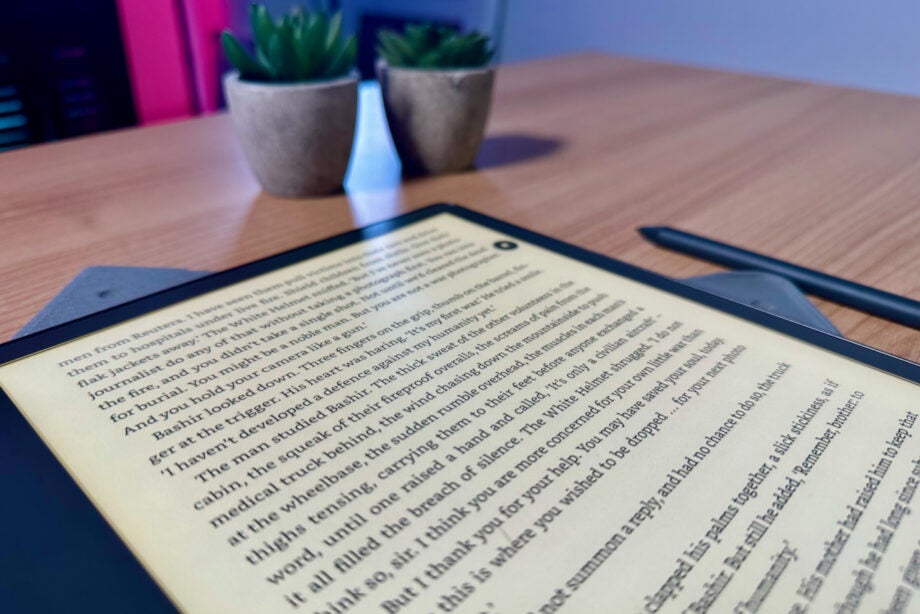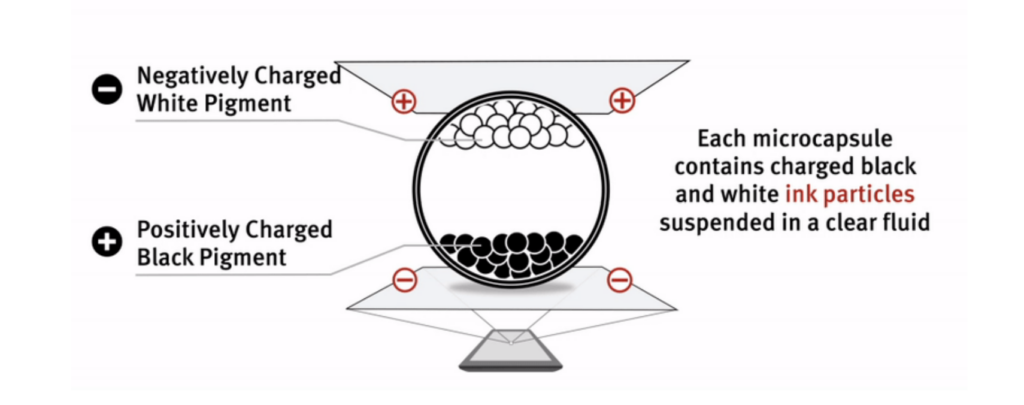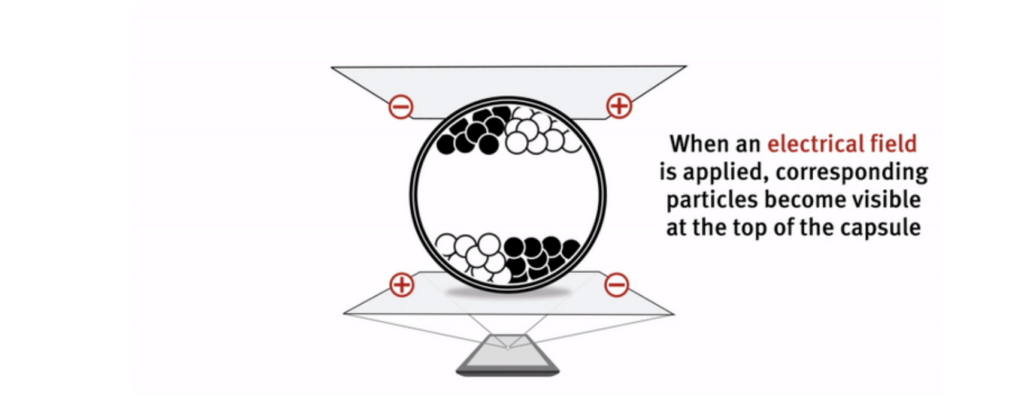What is an E-ink display? The e-reader display type explained

If you’ve been looking at picking up a new e-reader or digital paper device, you’ve probably come across the term “E-ink”. But, what does it mean?
Here’s everything you need to know about E-ink displays, including what they are, how they work and where you can find them…
What is an E-ink display?
An E-ink display is a screen that aims to replicate the experience of reading and writing on paper. These displays are usually grayscale but can come in colour as well.
Unlike LCD or OLED displays, E-ink screens are made up of millions of tiny microcapsules the diameter of human hair suspended in a clear fluid.
In the case of E-ink’s two-pigment ink system, each microcapsule contains negatively charged white particles and positively charged black particles. When a positive or negative electric field is applied, the corresponding particles move to the top of the microcapsule, making that area appear either black or white.


For colour displays, these microcapsules can also contain coloured pigments, while for digital paper devices, a magnetic pen is used to move ink and a small electrical charge resets the screen back to its original state.
E-ink displays are often found on e-readers, like Amazon’s Kindle tablets, and digital paper devices, like the Remarkable 2 and the Huawei MatePad Paper. Some devices, like the Kindle Scribe, allow you to read and write.
The name E-ink stands for “electronic ink”.
Can you see E-ink in the dark?
E-ink displays do not require backlights to work the way LCD screens do. This brings both benefits and drawbacks.
On the positive side, the lack of backlight means that E-ink displays more closely replicate the experience of reading and writing on paper. They’re easy on the eyes and you don’t need to worry about glare when settling outdoors to read.
It also extends the battery life of E-ink displays. E-ink devices can often go weeks between charges, whereas LCD screens typically can’t last beyond a couple of days.
The way that E-ink displays are built also means they’re often more rugged than their LCD counterparts – at least if the manufacturer opts to use a plastic-based TFT over a glass one.
One downside to this is that E-ink screens can be difficult to use in the dark. If you want to do some late-night reading or sketch in low light, you’ll either want to sit under a lamp or get an e-reader with some form of built-in light source.
Thankfully, many e-readers do come with lights to illuminate the screen in the evening.
Devices like the Kindle Paperwhite include a light that also allows you to adjust the warmth to make reading at night more comfortable on the eyes. The Paperwhite Signature Edition even has a light that adjusts to your surroundings automatically.
Where can I find an E-ink display?
You can find some of our favourite E-ink displays over in our best e-reader and best kindle lists.




